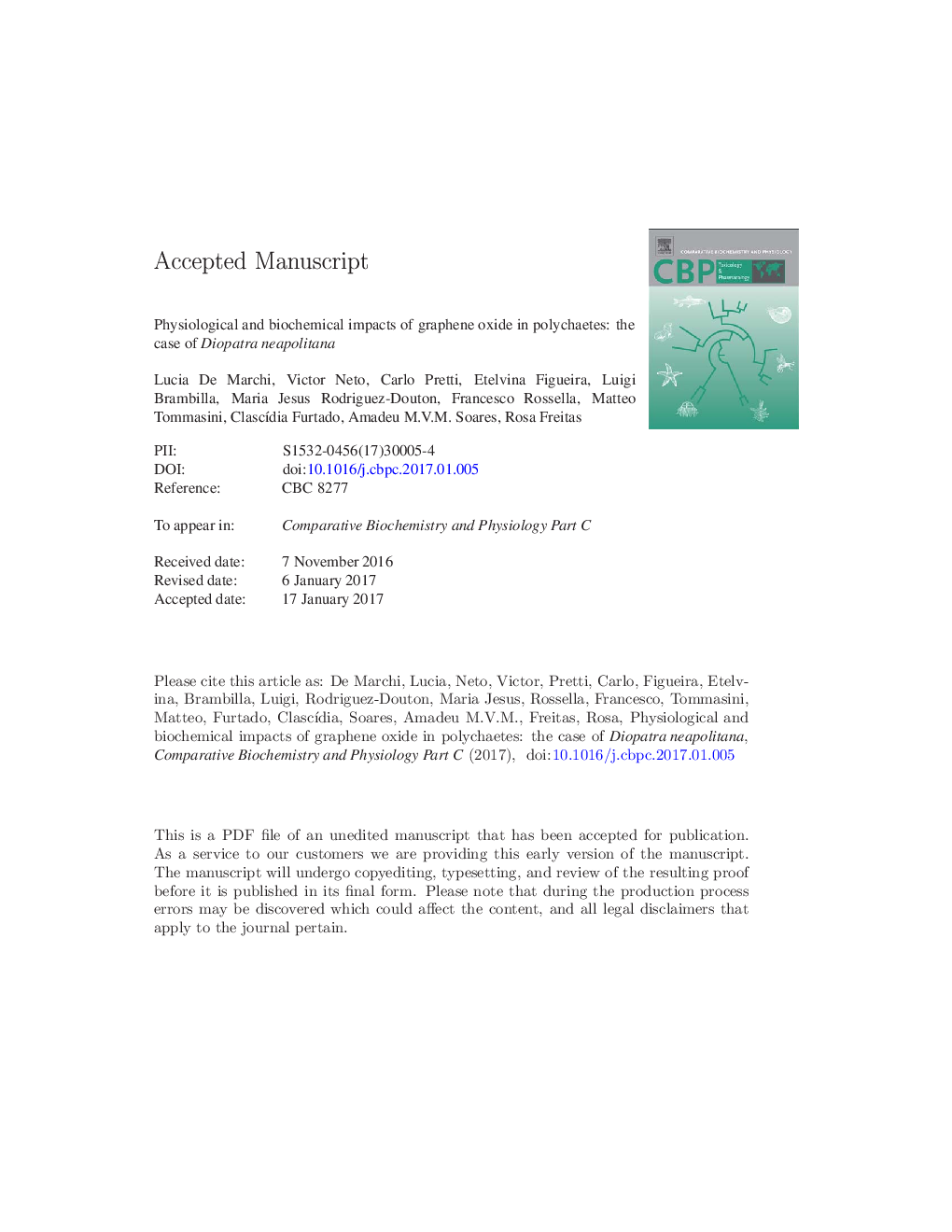| Article ID | Journal | Published Year | Pages | File Type |
|---|---|---|---|---|
| 5510673 | Comparative Biochemistry and Physiology Part C: Toxicology & Pharmacology | 2017 | 38 Pages |
Abstract
Graphene oxide (GO) is an important carbon nanomaterial (NM) that has been used, but limited literature is available regarding the impacts induced in aquatic organisms by this pollutant and, in particular in invertebrate species. The polychaete Diopatra neapolitana has frequently been used to evaluate the effects of environmental disturbances in estuarine systems due to its ecological and socio-economic importance but to our knowledge no information is available on D. neapolitana physiological and biochemical alterations due to GO exposure. Thus, the present study aimed to assess the toxic effects of different concentrations of GO (0.01; 0.10 and 1.00Â mg/L) in D. neapolitana physiological (regenerative capacity) and biochemical (energy reserves, metabolic activity and oxidative stress related biomarkers) performance, after 28Â days of exposure. The results obtained revealed that the exposure to GO induced negative effects on the regenerative capacity of D. neapolitana, with organisms exposed to higher concentrations regenerating less segments and taking longer periods to completely regenerate. GO also seemed to alter energy-related responses, especially glycogen content, with higher values in polychaetes exposed to GO which may result from a decreased metabolism (measured by electron transport system activity), when exposed to GO. Furthermore, under GO contamination D. neapolitana presented cellular damage, despite higher activities of antioxidant and biotransformation enzymes in individuals exposed to GO.
Related Topics
Life Sciences
Biochemistry, Genetics and Molecular Biology
Biochemistry
Authors
Lucia De Marchi, Victor Neto, Carlo Pretti, Etelvina Figueira, Luigi Brambilla, Maria Jesus Rodriguez-Douton, Francesco Rossella, Matteo Tommasini, ClascÃdia Furtado, Amadeu M.V.M. Soares, Rosa Freitas,
